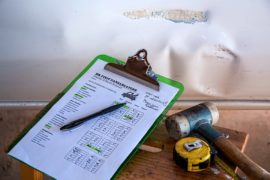Last Updated on Mar 25, 2020 by James W
In the past, going from concept and ideas to products on the shelf used to take months or years. These days, not so much. It is possible to go from product idea to retail store shelf in a month or two at the most thanks to the availability of huge online retailers like Amazon.
All it takes is knowing the processes involved, the stages you have to go through, what tools use and which retailers to court. It is not rocket science; you just need a brilliant marketable idea and you are ready. The following is a guide to help you do just that.
Knockout the Prototype and Samples
You already have an idea, yes? Well, the next thing to do is to produce some prototypes –make your idea physical. To do this, draw up a prototype or at least describe what the prototype looks like. If you can come up with a crude prototype, that’ll be even better.
If you cannot build the prototype yourself, provide a description and send it to a product creation company that can produce it for you. Be sure to shop around as different companies vary in price and quality.
Patent the Idea
Here’s one thing you need to know: retailers often get thousands of offers from people who want them to put their products on their shelves. This means that they may not be able to sign a non-disclosure agreement with you before having a look at your product.
This means there’s the possibility that your product idea can be claimed by them or anyone else if they so choose. So, protect yourself by securing a patent for your product. At the very least, ensure that your patent application is in the works before reaching out to retailer outlets. This way, it will be difficult for someone to steal your idea.
Most new entrepreneurs just go for the full utility patent application that can cost thousands of dollars and may not allow for modifications. However, there’s a much cheaper way that also allows for room for changes and improvements. These are
- Provisional patent applications
- Trademark registrations for product design, logo and brand
These cost between $65 and $900 if you file them yourself. They serve as placeholders that can be replaced by a full utility patent application when your product is fully developed and marketable. If you need more help with filing a patent, visit the US Patent and Trademark Office will provide you with all the necessary information.
Do Some Market Research
One of the most frustrating things a budding entrepreneur could ever go through is to spend a small fortune, resources and time on an idea for which there is no demand.
Therefore, as soon as you have a concept or an idea, have created a prototype and have filed your patent application, do some market research to see if you have a potentially viable idea.
These days, it does not take much to do that. Using tools like SurveyMonkey or other focus group tools, you can get as many as 300 people online or in your immediate vicinity to test the viability of your products.
Better still, send out a few samples to people and get their feedback. Thanks to social media, you can often get almost instant feedback from the alpha testers. They can leave suggestions, thoughts and ideas for product improvement or reasons why they liked it or didn’t like it.
As a rule, products that have overwhelming support and likeability among a small focus group or testers will always sell well in the marketplace. Also, you can always use the results from your initial testing as a case study or “testimonial??? when you start pitching your products to retailers.
Do a Lot of Testing and Retesting
Sometimes, you may have to do some retesting and adjustments to get the product right. Do whatever you need to do to create an excellent product that customers will love when they buy it. More importantly, consider the feedback from the initial testing and see if they will help improve your product(s). If the feedback from the first round of testers is positive, it is time to move forward with the product creation.
Identify Where to Source for Materials
If you are mass producing then you need to determine where you can source for high-quality materials at affordable prices. This is crucial to the entire process. Sometimes, entrepreneurs come up with great products that would have become bestsellers if they were more affordable. The key thing is to find a balance between quality and price. If you can, source the materials locally without having to burn a hole in your pockets.
Go Do Some Branding
Product branding is critical to your product’s success. It is what sets your product apart from whatever is in the marketplace right now. It often goes beyond your logos, designs and packaging – although those are very important.
It is the summation of all that makes your product unique and better than everything on the market. If you are having problems coming up with branding ideas, you should talk to a branding specialist. They will help you figure out the core of your product’s message.
Getting Barcodes or Universal Product Codes for Your Products
Barcodes, or Universal Product Codes (UPC) are at the heart of your venture. Without them, your deliveries would be very sluggish as you would have to manually confirm the orders, miss out on many payment alternatives, and orders fall through the crack.
In fact, it would be difficult to list your product on major retailing sites like Amazon. Without them, running your business would be a logistical nightmare. These codes help you organize your inventory and immediately identify the price of your products.
You would have to decide on the best one for your operation though as both have their various advantages and disadvantages. Luckily, barcode suppliers like Speedy Barcodes can help you figure out what type would best suit your operation and provide you with as many barcodes as you need at affordable prices.
Price Determination
Determine your cost price and then add 50% if they ever ask you about it. The rule of thumb is that wholesale price is usually 100 percent of cost price, while the retail price is usually 200 percent. That way, you’ll have enough wiggle room to negotiate and still be in profit.
Retailers tend to drive a hard bargain and will do everything to cut down on your initial offer – that’s more profit for them when they sell your products – but doing this helps ensure that you make a healthy profit. If they like your product, they will order it in bulk, granting enormous profits.
Research Your Retailer Stores
Now that you have your product created, packaged, and tagged with bar codes, it is time to start reaching out to retail stores. You’d think this would be the easy part – it is not. A good start would be in smaller niche outlets. Once you have the results you are looking for, then you can break into larger outlets like Wal-Mart or Best Buy.
The key is to ensure that you find stores with similar interests or have the audience to sell your products. Retailers, particularly large ones, often have to review thousands of products that are sent to them by various suppliers and entrepreneurs like yourself.
This means that your product has to stand out, fill a need, have a unique angle or have the potential to sell out real quick.
You need to understand that retail outlets are in business to make profits. Therefore, they will not hesitate to throw out wishy-washy ideas or boring, redundant concepts. So, ensure that your products are top notch. Sometimes, you only get one chance with these chain stores. Make it count.
Selling Your Ideas
Of course, you would have to show them how it works or pitch your product to the retail stores. So, be prepared for that.
You should also include promotional items and samples if possible, so they can see how it works without you being physically present. Sometimes, retail stores are known for ordering a product without the product creator even coming in for a pitch.
Final Notes
You will often have to pitch your product to multiple retail stores before you will get one that likes and wants your product. It can also take anywhere from a month to a year to hear back.
So, don’t sweat it if you do not hear back from them immediately. The most important thing is so just keep going. Keep on pushing your product (see why it is important for you to believe in your product?) until you have some breakthrough.
Lucky for you, there are many retail stores – big and small – where you can try to sell your products. So, if you cannot land the big ones yet, start with the small to medium stores. These will give you better edge with those larger retailers in the future.
Author Bio:
The writer, Oscar King, is an entrepreneur who writes about his experiences in the world of retail, hoping others will learn from his triumphs and mistakes. If you wish to learn more about Oscar you can visit his profile on Google+.




